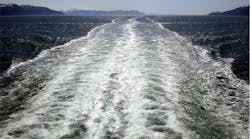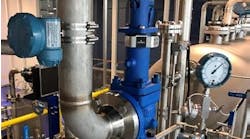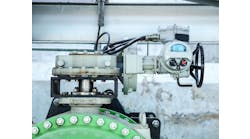Global warming can be slowed by either reducing incoming heat or by increasing outgoing heat. Today's goal is to reach "net-zero" emissions by 2030, which is only half of what’s needed (net zero is only half of zero) because it disregards carbon dioxide (CO2) already accumulated in the air. According to my calculations, use of fossil fuels won’t decrease, but will increase until 2030.
In contrast, cooling directly reduces global temperatures, and can be accomplished by either converting to burning only "green" hydrogen or by increasing the earth’s reflection of solar radiation back into space, which can be achieved by increasing the albedo of the planet.
Today, the incoming heat exceeds the energy leaving by about 0.5%, mostly due to the yearly emission of about 40 billion tons of CO2 into the air. One method of reducing the 0.1% difference is to increase cooling by a similar amount. This can be done by increasing the reflectivity (albedo) of the earth. As shown in Figure 1, the average albedo of our planet is about 0.29, meaning about 29% of the solar energy reaching the planet is reflected back into space. How much must the earth's albedo increase to reach the amount of cooling needed to stop all warming?
I don’t know if we could sufficiently "whiten the human footprint" to eliminate global warming completely, but I know we can increase the global albedo if we use lighter colored asphalt on our roads and parking lots, as well as make an effort to "whiten" our roofs, farmlands and grazing fields. I can also say that, when building new roads or buildings, the cost probably doesn’t change with the color of the asphalt or roof shingles. Actually, I believe that it costs less than decarbonization, and it could also be done faster, while creating more jobs and helping to cool buildings in the summer.
For example, if we assume that the area of a building and its parking lot is 1,000 m2 and if that building is located in an area receiving a yearly insolation of only 1,000 kWh, increasing the albedo of that total surface by 0.5 will provide the same amount of cooling as the amount of heating caused by the emission of 25 tons of CO2. If the social cost of decarbonization is assumed to be $50 per ton of CO2 emitted, the value of the increase of this home's albedo by 0.5 would be worth $1,250 per year.
Reduced reflectivity
The number of albedo effects and of the means of potential albedo modifications are large. Therefore. for purposes of illustration, I’ll only mention a few:
We do know that the overall albedo of our planet isn’t increasing, but decreasing due to the effects of global warming. The main reason is the melting of ice and snow at the poles and at high altitudes elsewhere. This process reduces the global albedo due to fewer surfaces with high-reflectivity values. Snow and ice are being replaced by low-albedo surfaces such as oceans, permafrost-covered regions and land masses.
This process is also self-accelerating because melting increases global warming and global warming increases melting. It is why warming in the Arctic is three to four times higher than the global average. This is known as the ice-albedo feedback (Figure 2). Similarly, forest fires—besides increasing surface albedo by canopy removal—can also deposit ash on ice surfaces, reducing its albedo effect.
Aerosol effects
Aerosols are small liquid droplets and solid particles in the atmosphere, which cause a net cooling effect by reflecting the sun’s energy back out into space. Inversely, black aerosols such as coal smoke have the opposite effect, heating the atmosphere by absorbing solar heat. It’s estimated that, during the Industrial Age, aerosols (light-colored smoke) actually reduced global warming by up to 1 °C. Still, because of the harmful health effects of this form of smoke pollution, it’s desirable to eliminate it.
Albedo manipulation
Albedo manipulation can also be applied for specific purposes. The potential hasn’t been tested yet. For example, one of my ideas is to increase albedo to reduce hurricane damage. This concept is based on the fact that hurricanes are exacerbated by increasing surface temperatures of the ocean surface below them. So, if we reduce that surface temperature, the strength of hurricanes will decrease.
Because water absorbs about 93% of ambient solar radiation and reflects it back into space, only about 7% (its albedo is 0.07) of that albedo is increased, so the surface gets cooler. The albedo of whitewater is three times higher (about 0.22) than regular water. Increasing the albedo (from 0.07 to 0.22) would reduce the temperature of whitewater surfaces and reduce the "fuel supply" of hurricanes. Turning the water surfaces in front of the path of the slow-moving tropical depression or hurricane into whitewater reduces the damage caused by hurricanes.
The cost of forming whitewater is insignificant compared to the damage caused by hurricanes. Whitewater surfaces can be created by generating microbubbles (also called sea foam) on the surface of the ocean. Extending the lifetime of bubbles from minutes to days can be achieved by adding surfactants such as amphiphilic nanoparticles or phospholipids. Specialized container ships equipped with nozzles and/or shakers that produce massive quantities of surfactant-treated microbubbles should be evaluated.
To my knowledge, this method of protection against hurricane damage has not yet been assessed, nor have the many other local albedo manipulation techniques that could turn out to be faster and cheaper to implement than presently contemplated ones.







